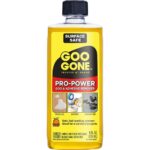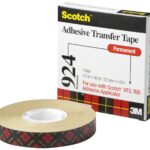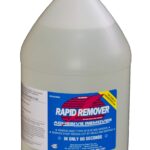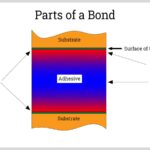Glue is a type of material that binds two or more items together. It is usually made of some form of adhesive material, such as polyvinyl acetate or epoxy. To use glue, the surfaces of the items being joined together must be clean and free of dirt, dust, oil and other contaminants. Once the items are cleaned, the glue can be applied. Depending on the type of glue, it can be applied in liquid, paste, or powder form.
Generally, the glue should be left to sit for a few minutes before pressing the items together. When the items are pressed together, the adhesive components of the glue mix together and form a bond. The bond is strong enough to hold the items in place and help prevent them from coming apart. As it dries, the bond forms a rigid material that holds the items together even more securely. Glue can be used for a wide variety of materials and items, such as wood, metal, plastic, ceramics and fabrics. Glue is also a great choice for repairs, as it is relatively durable and can be used to fill small gaps or cracks. In summary, glue is a versatile and useful material for binding two or more items together. With a few simple steps, you can create a strong bond that will help keep the items in place.
What type of substance is glue
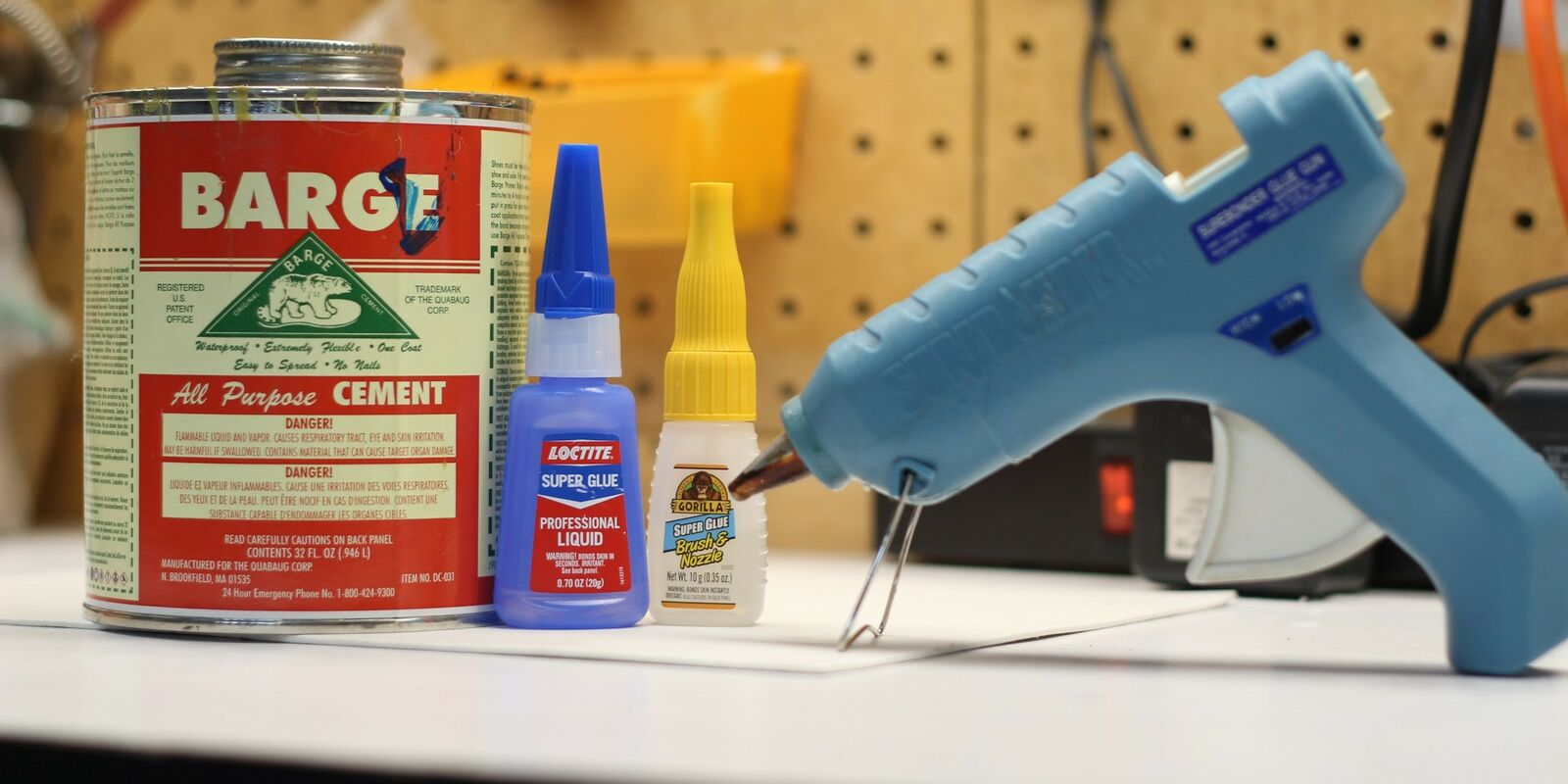
It works by forming strong chemical bonds between its molecules and those of the surfaces it is joining. The molecules of the glue create a film on the surfaces, which binds them together and makes a strong connection. This connection makes it difficult to separate the two surfaces without damaging them. Different types of glue are available depending on what material it is applied to. Some common types of glue are epoxy, rubber cement, hot glue and Super Glue.
Each type of glue works best with a specific type of material. For example, epoxy glue works best on hard, non-porous surfaces such as glass, metal, and stone. Rubber cement is ideal for use on flexible materials such as paper, cloth, and leather. Hot glue is great for bonding wood, cloth and other porous materials. Super Glue is an incredibly strong adhesive that works best on small, precise areas. No matter what type of glue is used, it is important to read the instructions and use it as directed. This will ensure that the best possible bonding results are achieved.
What is the substance of glue?
The polymers give the glue its stickiness, while the resins help to make the glue waterproof and durable. The adhesives act as a binding agent, allowing the glue to form a strong bond between the two objects. When applying glue, the molecules of the glue spread out, forming a sticky surface which can bind to the molecules of the object. This creates a strong bond between the two materials, making them almost impossible to separate. Glue works by creating a strong chemical bond between two objects.
Different types of glues use different chemical reactions to achieve this, such as chemical reactions between polymers and adhesives. The strength of the bond created by glue depends on the type of glue used and the materials being glued. For example, some glues are designed to be stronger than others and can be used to hold heavier objects. In conclusion, glue is a substance used to bind two objects together, using a combination of polymers, resins, and adhesives to create a strong chemical bond. Glue is an essential tool in many everyday tasks, from building furniture to crafting and hobby projects.
Is glue a compound or mixture?
It’s a combination of two or more substances that are not chemically bonded, but rather held together by physical forces. When glue is applied to a surface, it forms a thin film. This film is able to bind two objects together by forming tiny bridges between them. These bridges are created by the polymers and resins in the glue. The bridges created by the glue are strong enough to hold two objects together, but weak enough that they can be pulled apart if needed.
The strength of the bonds will depend on the type of glue used and the surface on which it is applied. The strength and flexibility of the glue’s bond is what makes it an ideal adhesive for woodworking and craft projects. Glue is also capable of filling gaps between two surfaces, providing a strong and waterproof seal. So to answer the question, glue is a mixture and not a compound. As a mixture, glue is a versatile and reliable adhesive that can be used to bond many different materials.
Why is glue a liquid?
This movement of molecules creates a fluid-like consistency that allows glue to spread and stick to surfaces. The viscosity of glue is also an important factor. Glues with higher viscosity are usually thicker and they can hold heavier objects in position. Thinner glues, on the other hand, have lower viscosity and they can be used on lighter objects that don’t require a stronger hold. The adhesive chemicals in glue are another key factor that helps determine how well it works.
Different chemical formulas are often used to create different types of glue depending on the material that needs to be bonded. Some glues contain polymers that form strong bonds, while others contain solvents that help the glue to spread more easily. Glue is also a liquid because it contains water. This is usually added to increase the bond strength and also help to decrease the drying time. In conclusion, glue is a liquid because it’s made up of molecules that are constantly moving and interacting with each other, it has a viscosity that can range from thick to thin depending on the application, and it contains adhesive chemicals and water to help it stick and dry quickly. This combination of elements and properties is what makes glue so useful for a variety of different tasks.
What is the classification of glue?
Glue can be classified into two main categories: water-based and solvent-based. Water-based glues are primarily made of polyvinyl acetate, while solvent-based glues are composed of polyvinyl acetate and other polymers. Water-based glues are popular for their strong adhesiveness, quick drying time and low toxicity. They are often used in woodworking, papercrafts and for mending broken ceramic items. Solvent-based glues, on the other hand, are composed of a combination of polymers and organic solvents.
They are known for their incredible strength and versatility, making them perfect for a variety of applications, such as laminating, bonding metals, and fastening textiles. When glue is applied, it must be allowed to dry to achieve the best results. The drying time depends on the type of glue used and the temperature of the environment. Water-based glues dry faster than solvent-based glues, and they can dry at room temperature in a matter of minutes. Solvent-based glues, on the other hand, require more time to dry and usually need to be heated to achieve proper adhesion. Overall, glue is an extremely versatile and useful substance that can be used to bond a variety of materials. It is classified into two main categories – water-based and solvent-based – each of which has its own unique properties and uses. The type of glue used and the drying time will depend on the material being bonded and the environment in which it is used.
Is glue a liquid or gas?
How glue works is quite fascinating. When a glue is applied to a surface, its molecules become attracted to the molecules of the surface it is being applied to. This causes the glue to stick, forming a bond between the two surfaces. The molecular attraction is the reason why the glue dries up and becomes solid. As the glue dries, the molecules become tightly packed and form a strong bond.
This bond is what creates the adhesive layer, enabling two surfaces to stick together. Different types of glue are designed to work with different materials. For example, some glue is designed to work with wood, whereas others are designed to work with plastic. The type of glue you use will determine how strong the bond will be and how long it will last. Overall, glue is a liquid when wet, but once it dries, it becomes a solid. This is why it is so effective at creating strong bonds between two surfaces.
Is glue a solid liquid or gas?
When glue is applied to an object or surface, it forms a liquid-like bond that hardens to form a strong bond. The way glue works is that the adhesive particles attach to the substrate and create a physical bond that holds the two surfaces together. When the glue is applied, the adhesive particles flow into the microscopic pores and crevices of the substrate and form a strong bond. Once the glue has been applied and allowed to dry, it becomes a solid. This solid bond is strong enough to hold the two objects together securely.
The bond created is water resistant, which makes it useful for outdoor applications where moisture is present. The strength of the bond created by glue depends on the type of glue used and the surface of the objects being bonded. Different types of glue have different bond strengths and adhere to different materials. It is important to choose the right type of glue for the job to ensure a strong bond. Glue can be a useful tool for a variety of applications, from craft projects to home repair. Understanding how glue works and selecting the right type of glue for the job is essential for successful adhesion.
Is glue a chemical compound?
When glue is exposed to air, the ingredients in it react with moisture to form a strong bond between two items. The adhesive power of glue works by creating a molecular bond between the items being glued. This bond is made possible by the chemical components in the glue that create a reaction between the molecules of the two surfaces. This reaction creates an attraction between the two molecules, making it difficult to separate them. In addition to its adhesive properties, glue also contains plasticizers and other substances which make it flexible and durable.
The combination of these features makes it great for various types of applications from crafting to construction. Glue has been used for thousands of years, and is still widely used today. It is one of the most commonly used materials in a variety of industries, from arts and crafts to home repairs. It is a versatile, reliable, and cost-effective way to join two materials together. Overall, glue is a chemical compound that provides an incredibly strong and lasting bond between two items. It is a versatile and reliable material that has been used for many years in a variety of different applications.
Is glue compound or mixture?
Glue forms a strong bond when it’s applied to surfaces and dries, creating a strong bond between the two surfaces. When glue is applied to two surfaces, the particles within the glue form strong molecular bonds with the surfaces, creating a strong bond between the two materials. This bond is known as an adhesive bond, and it can be used to hold two surfaces together. In order for the glue to create this strong bond, it must be able to penetrate the surface of the material and form a chemical reaction. This reaction is necessary for the glue to form a bond and hold the two surfaces together.
Glue also works by creating a seal between the two materials. This seal helps prevent any moisture or air from entering between the two materials, which could weaken the bond over time. In summary, glue is a compound that is composed of tiny particles that form strong molecular bonds with surfaces when it is applied. The reaction creates a strong bond between the two surfaces and helps create a seal that prevents moisture or air from entering and weakening the bond.
Is glue compound or element?
The polymers in glue are often made up of water, monomers, and other chemicals. When glue is applied to a surface, a reaction takes place that causes the molecules of the adhesive to form strong bonds with the molecules of the surface. This reaction requires moisture, which is why glue works best when applied to damp surfaces. Glue often contains plasticizers that help to make the adhesive more flexible, so it can form stronger bonds and be used in a variety of applications. Glue can be used to hold materials together, seal gaps and cracks, and create a stronger bond between two surfaces.
The strength of the bond formed by glue depends on the type of glue used and the surface that it is applied to. Different types of glue work better with different surfaces, so it is important to select the right type of glue for the job. In general, there are two main types of glue: liquid glues and solid glues. Liquid glues are usually better suited for bonding porous surfaces, while solid glues are better for non-porous surfaces. Depending on the intended use, the right type of glue should be chosen to ensure that the bonds formed are strong and long-lasting.
What type of liquid is glue?
Glue works by forming a strong bond between the two materials, which helps to create an airtight seal. The glue is applied to one of the materials and allowed to dry. It then absorbs the moisture from the surrounding air, which causes it to harden and form a strong bond with the other material. The strength of the bond that is created by the glue is determined by the amount of time it is allowed to dry. As the glue dries, it forms a chemical bond with the material that it is adhering to.
This bond is strong enough to hold the two materials together even when subjected to a lot of stress. Glue is a useful tool that can be used to quickly and easily bond two materials together. It is important to select the right type of glue for the material that you are bonding and allow the glue to dry for the appropriate amount of time, in order to ensure that the bond is strong and secure.
Is glue is a mixture?
When a liquid glue is used, the polymers and resins dissolve in the liquid and become a gel-like substance that adheres to both surfaces. As the liquid evaporates, the polymers become a solid and form a strong bond. When a hot glue is used, the polymers melt and become a semi-fluid material that can be applied to both surfaces. As the material cools and hardens, it forms a bond that is stronger than the individual materials. Glue is a versatile tool used to bond many different materials together, such as wood, metal, plastic, fabric, and paper.
Different types of glue are used for different applications, and the strength of the bond varies depending on the type and amount of glue used. The most important factor in determining the strength of the bond created by glue is the surface preparation. Proper surface preparation can help ensure that the bond is strong and lasts for a long time.
Is glue a colloid mixture?
The two primary components of glue are a polymer and a solvent, which are mixed together to form a paste-like substance. The polymer in glue is a long chain of molecules, and it helps to hold the material together. The solvent helps to keep the polymer molecules separate and allows the glue to spread evenly. When the glue is applied to a surface, the solvent evaporates and the polymer molecules bond to the surfaces, forming a strong bond. The bond created is strong enough to hold materials together without breaking apart.
Glue is used in a variety of applications, such as woodworking and crafts, as it can easily bond wood, metals, and other materials. It is also used for medical and dental applications, as its adhesive properties make it ideal for use in molds and casts. In summary, glue is a colloid mixture that consists of two primary components, a polymer and a solvent, which are mixed together to form a paste-like substance. When the glue is applied to a surface, the solvent evaporates and the polymer molecules bond to the surfaces, forming a strong bond. Glue is widely used in a variety of applications due to its adhesive properties.
What can you do with glue?
Glue is made of natural ingredients like casein, or synthetic substances like polyvinyl acetate. Glue is widely used in many industries, including construction, automotive, and furniture manufacturing. It is also used for crafts, repairs, and assembling toys. Glue can also be used to attach objects to surfaces, such as in woodworking, and for sealing containers. Glue can be found in various forms, such as liquid, paste, and foam.
Liquid glue is typically used for craft and furniture projects, while paste glue is best for assembling toys, repairing broken items, and attaching objects to surfaces. Foam glue is used for a variety of applications, such as sealing containers, mounting items on walls, and filling gaps in furniture. Glue can be used in a variety of ways, from simple projects like attaching paper to a wall to more complicated projects like assembling furniture. It is also great for DIY repairs around the house, and can be used for fun craft projects with kids. In conclusion, glue is an essential item for many projects and repairs, and it can be used for a variety of applications. From attaching paper to a wall to assembling furniture, glue is a versatile tool that can help you complete many projects.
What is the strongest household glue?
One of the most powerful types of glue is household glue, designed to be strong and durable. Household glue is a type of adhesive that is designed to provide a strong bond between surfaces. It works by forming a chemical bond between the surfaces, which is why it needs to be applied correctly in order to achieve the strongest possible hold. To use household glue, the surfaces need to be clean and dry. The glue should then be applied evenly and coverage of the entire surfaces is recommended.
Once applied, the surfaces should be left to bond for a few minutes and then pressed together firmly for the strongest hold. For the strongest possible bond, it is important to use the right type of household glue. Different glues are designed for different purposes, such as woodworking or metalworking, and it is important to use a glue that is suitable for the materials being joined. For the strongest results, it is recommended to allow the glue to cure for a few hours before putting any pressure on it. This will ensure that the bond is as strong as possible and will last for a long time. Ultimately, the strongest household glue is one that is designed for the job at hand and is applied correctly.
What are the advantages of glue?
It works by forming a strong bond between two surfaces, creating a tight seal that is difficult to break. One of the major advantages of glue is that it is relatively easy to use. It can be applied quickly and easily to almost any surface, making it a great choice for a variety of projects. Additionally, glue is extremely durable and long-lasting, so it can be used for a variety of projects with confidence that it will hold up over time. Another advantage of glue is that it can often be used in place of nails and screws.
This can make it much easier to construct items, as you don’t have to worry about the hassle of drilling and hammering. Additionally, it can make it easier to remove items later, as the glue can be easily dissolved with the right solvents. Glue also has a variety of other advantages, such as being waterproof, heat resistant, and electrically resistant. This makes it ideal for a variety of applications, from assembling electronics to creating waterproof seals. Additionally, it can often be used on a wide range of materials, including wood, plastic, leather, metal, and glass. Overall, glue is an incredibly useful tool for a variety of applications, from basic DIY projects to more complex engineering tasks. With its easy application, long-lasting durability, and versatile range of uses, it’s no wonder why glue remains a popular choice for many.
What is the strongest glue on the market?
It works by creating a bond between two surfaces on contact. Different types of glue are available on the market, and the strongest glue is generally epoxy glue. Epoxy glue is a two-part adhesive that combines a resin and a hardener to form a strong bond. The resin is a sticky liquid that bonds to the surface, while the hardener acts as the catalyst that solidifies the bond. When the two parts are mixed together, they form a strong, durable bond that is stronger than the surface itself.
Epoxy glue is ideal for use on materials like metal, plastic, concrete, glass, and ceramic. It can also be used to repair broken items or to build new items. It is also a good choice for outdoor projects, as it is waterproof and can hold up to extreme temperatures. Epoxy glue is very difficult to remove once it sets, so it is important to make sure that the surface is clean and dry before applying the glue. It also sets faster than other glues, so it is important to be precise when using it. Epoxy glue is also more expensive than other glues, but it is worth the extra cost for its superior strength and durability. In conclusion, epoxy glue is the strongest glue on the market, and it is a great choice for projects that require a strong, lasting bond. It is important to apply it correctly and to use it with care, so that you can get the most out of this powerful adhesive.
What does adhesive do
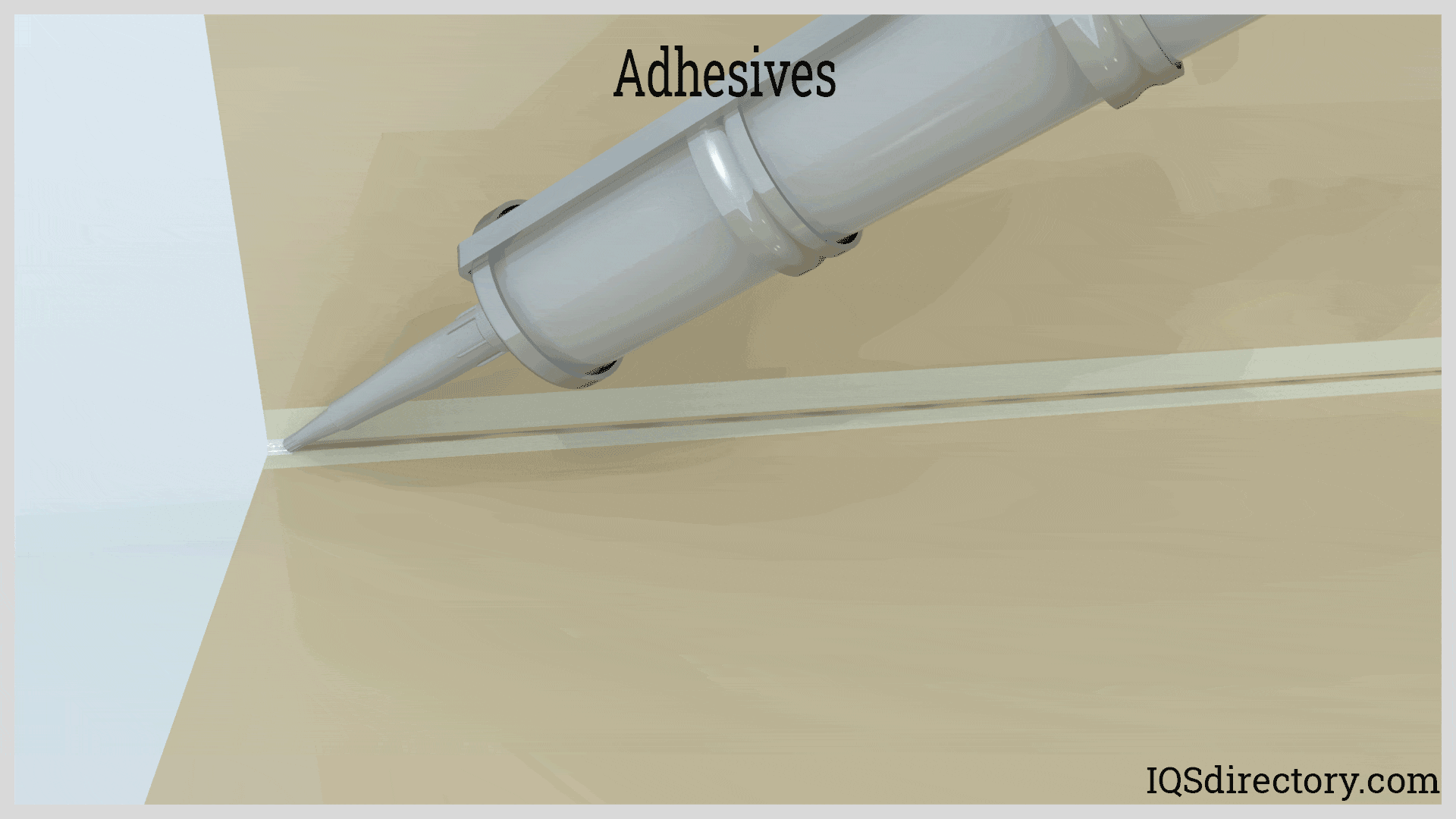
It works by creating a strong, permanent bond between two surfaces, often through the use of heat or pressure. Adhesives are used in many everyday items such as paper, tape, glue, labels, and more. Adhesives are made from a variety of materials such as rubber, latex, and plastics, and each type of adhesive has different properties that make it better for certain applications. The type of adhesive used depends on the type of material being bonded together. For example, rubber adhesive works well with paper, while plastic adhesives are better suited for bonding metals.
When bonding materials together, the adhesive must be applied in the right way and at the right temperature. Applying too much or too little adhesive can cause a weak bond, while incorrect temperatures can cause the adhesive to not fully cure. To ensure a strong bond, the best practice is to follow the instructions that come with the adhesive. Most adhesives require some time to properly cure, during which the adhesive must remain undisturbed. This curing time can range from a few minutes to several hours, depending on the type of adhesive and the type of material being bonded. Adhesives are an important part of everyday life and can be used to bond a wide range of materials. They can be used to construct furniture, make repairs, stick objects together, and for many other purposes. Adhesive is a versatile material that is easy to use and can provide a strong, reliable bond.
What is the advantage of adhesive?
Adhesive is useful because it can be used to make a strong bond between different materials. The biggest advantage of using adhesive is that it is fast and easy to apply. You can use glue to quickly and securely attach two surfaces together. It also provides a long-lasting hold that will not easily break. Another advantage of adhesive is that it is usually very affordable.
It is much less expensive than purchasing separate parts and trying to assemble them into one piece. This makes it a great choice for a variety of projects. Adhesive also provides a strong seal that will protect materials from moisture and dust. This makes it a great choice for applications that need to be water resistant, like in boats and automobiles. Finally, adhesive is also very versatile. It can be used for a variety of materials, from plastic to metal, and it can also be used on a range of surfaces, from smooth to rough. This makes it a great choice for any project.
Is adhesive and glue the same thing?
Glue and adhesives are often used interchangeably, but they are not exactly the same. Glue is a type of an adhesive, but it is not the only one. Glue is typically made from natural ingredients such as animal hide, bones, or fish parts. It is heated and mixed with other ingredients to create a sticky paste. The paste is then applied to a surface that needs to be joined together.
Adhesives, on the other hand, are made from synthetic materials such as polyurethane or acrylics. These materials are not as heat-sensitive as glue, which makes them more suitable for industrial applications. In terms of how glue works, the adhesive reacts with the surface it is applied to and forms a strong bond that can hold the two pieces together. The bond is usually strong enough to withstand wear and tear, as well as temperature and moisture changes. The bond can be further strengthened by applying pressure to the surfaces while the adhesive is still wet. Overall, glue and adhesives are not the same, but they can both be used to join two surfaces together. Glue is typically used for household projects, while adhesives are more suitable for industrial applications.
How does the substance work as an adhesive?
It works by forming a strong bond between two objects. The adhesive in glue is made from polymers, which are long chains of molecules. When glue is applied to two surfaces, the molecules in the glue form a network between the two objects. This network creates a mechanical bond, which is what makes the two surfaces stick together. Glue is usually very sticky when it is first applied and this helps to ensure that the surfaces stick together.
As the glue dries, it gets harder and more difficult to separate the two objects. This is because the polymers in the glue have formed a strong bond between the surfaces. The strength of the bond that is created by the glue depends on the type of adhesive and the surfaces that are being glued together. Different glues are designed for different surfaces and some are stronger than others. Some glues are also designed to be waterproof or heat resistant. In general, glue works by forming a strong bond between two surfaces, which makes it difficult to separate them. This bond is created by the polymers in the glue, and the strength of the bond depends on the type of glue and the surfaces being glued together.
What makes an adhesive sticky?
Glue is made up of many different types of molecules, including polymers, proteins and other sticky substances. The primary factor that makes glue sticky is the presence of long-chain molecules. These molecules have a sticky surface, allowing them to grip onto other surfaces and objects. On a molecular level, glue works by forming a strong bond between two surfaces. Glue also contains chemicals that can soften the surfaces it is bonding, making the bond stronger.
These chemicals help break down the molecules on the surface and allow the glue molecules to more easily penetrate and stick on. The amount of stickiness of the glue also depends on the type of adhesive. Different types of adhesive have different molecular compositions that affect the stickiness of the glue. For example, some glues are designed to bond quickly and strongly, while others are designed to be less sticky and more flexible. Finally, the environment can also affect the stickiness of glue. Different temperatures, humidity levels, and other environmental factors can affect the adhesive’s ability to form a strong bond. To ensure the best results, it’s important to use the right glue for the right job to get the desired results.
What adhesive should I use?
It can be a glue, tape, or any other kind of adhesive. When choosing an adhesive for a project, it’s important to consider the type of material you’re bonding together, the fit of the bond, and the conditions the bond will be exposed to. For most general purpose projects, a white glue like Elmer’s Glue-All or a craft glue like Aleene’s Tacky Glue will work well. These adhesives form a strong bond that remains flexible and can be used on a variety of materials. For metal, plastic, or glass surfaces, a cyanoacrylate adhesive like Loctite Super Glue is recommended.
This adhesive forms a strong, almost permanent bond that can withstand high temperatures and even water. For heavier materials like wood, fabric, or leather, a contact adhesive or a construction adhesive like Loctite PL Premium is ideal. These adhesives create a strong bond between the materials, but can be difficult to remove if the bond needs to be undone. Finally, for projects involving fabrics and paper, a washable glue like Elmer’s School Glue is perfect. This adhesive is flexible and doesn’t get brittle over time, so it’s perfect for craft projects. It’s also easy to clean up and remove if needed.
What adhesive works best to repair a gun stock?
When repairing a gun stock, it is important to choose the right adhesive. Glues that work best for gun stocks are epoxies and polyurethanes. Epoxies tend to be the most popular choice, as they create a strong, waterproof bond that is highly resistant to shock and abrasion. Epoxies come in two parts that need to be mixed together before application. This ensures that the glue will work properly when needed.
Polyurethanes are also a great choice for gun stocks, as they provide a durable and waterproof bond. They are also heat-resistant and can be applied in a single step. When choosing an adhesive, it is important to consider the material of the gun stock and the environment in which it will be used. For example, if the gun stock is exposed to moisture or extreme temperatures, an epoxy or polyurethane may be required. In conclusion, epoxies and polyurethanes work best for repairing gun stocks. They are strong, waterproof, and resistant to shock and abrasion, making them ideal for this application. In addition, they provide a heat-resistant bond, ensuring that the repair will last a long time.
What is the strongest glue?
Glues are made up of polymers, which are long chains of molecules, and they come in a variety of forms such as liquid, paste and powder. When it comes to the strongest glue, there is no single answer. It depends on the type of materials being joined together and the environment in which it is used. For instance, cyanoacrylate, a type of glue commonly known as super glue, is very strong and is often used for metal and plastic bonding. Epoxy glue is also strong and is often used for more permanent bonds, such as for fixing heavy objects or for bonding stone or ceramic tiles.
Other types of glue, such as hot glue and contact cement, are also very strong and are ideal for projects that require a fast drying time. Hot glue is typically used for woodworking and arts and crafts, while contact cement is commonly used for wall coverings, flooring, and countertop installations. For outdoor applications, where moisture is a concern, polyurethane glue is often the strongest choice. This type of glue is waterproof and can be used to join various different materials, including wood and metal. Overall, determining the strongest glue will depend on the type of application and the environment in which it is used. However, regardless of the type of glue used, it is important to make sure that it is applied correctly and that there is a good surface to bond. Doing so will help ensure a strong bond is created and that it will last for a long time.
What is the purpose of adhesive?
Glue is a type of adhesive that has been used for centuries to hold things together. Glue works by forming a strong bond between two surfaces, either through the chemical reaction of two substances or by providing a physical barrier. The most common types of glue are epoxies and polyurethanes. Epoxy glue is made up of two substances that react with each other when mixed. When the two substances come into contact, a chemical reaction occurs and a strong bond is formed.
Polyurethane glue is a type of plastic that can bind two surfaces together by providing a physical barrier. The purpose of adhesive is to create a strong bond between two objects. Most glue can be used on multiple surfaces and can withstand extreme temperatures and conditions. Glue is also water resistant, making it an ideal choice for a variety of applications. Adhesives can be used in a variety of ways, from crafts and home repairs to industrial applications. Glue can be used to attach pieces of wood, metal and plastic together and is an important part of many construction and repair projects. Glue is also used in the automotive industry, to attach parts of vehicles together. In summary, adhesive is a substance used to join two surfaces or objects together. Glue works by forming a strong bond between two surfaces, either through a chemical reaction or physical barrier. The purpose of adhesive is to create a strong bond between two objects, making it a useful tool in a variety of applications.
How does adhesive work

Glue works by creating a strong bond between two surfaces. A common type of adhesive is a polymer glue, which is made up of many small molecules that are linked together. These molecules form a network of microscopic hooks and loops that cling to surfaces and hold them together. The adhesive molecules also fill in any gaps between the surfaces they are connecting and create a seal. This prevents air and moisture from getting in and keeps the bond strong.
Glue can be applied in a variety of ways, such as with liquid glue, hot glue, or spray adhesive. Depending on the type of adhesive used, the bond can be temporary or permanent. Adhesives are important for a variety of applications, from woodworking to arts and crafts. With the proper technique, a strong bond can be created with glue to join materials together securely.
How do adhesives stick?
These components interact with the surfaces they’re applied to in order to form a strong bond. When glue is applied to a surface, the adhesive molecules in the glue spread out and penetrate the tiny pores in the surface. This creates a network of molecules that hold the two surfaces together. The molecules in the glue also create a kind of flexible mesh that helps the bond stay strong. Other types of adhesives, such as tape, work in a similar way.
The adhesive molecules spread out and make contact with the surface. This creates a strong bond that can hold materials together for long periods of time. Different types of adhesives are used for different purposes. Some adhesives are better for heavy-duty projects, while others are better for lighter materials. It is important to select the right type of adhesive for the job. In general, adhesives are great for sticking different materials together and creating strong bonds. Glue, tape, and other adhesives are an effective and easy way to join materials. With the right adhesive, it’s possible to create strong and lasting connections.
What is the difference between glue and adhesive?
Glue and adhesive are similar in that they are both substances that are used to bond materials together. Glue works by forming a strong bond or connection between two surfaces. The glue molecules bond together once the surfaces have been exposed to moisture. The moisture causes the molecules to bind together and form a solid bond. Adhesive, on the other hand, is made up of chemicals that form a chemical bond between two surfaces.
This bond is usually much stronger than the bond created by glue. Adhesives are applied with the use of heat, pressure or solvents to create a strong bond between two surfaces. The main difference between glue and adhesive is the type of bond that they form. Glue forms a physical bond while adhesive forms a chemical bond. Glue is generally used in crafts and to bond porous materials while adhesive is used to bond non-porous materials. It is important to know the difference between glue and adhesive so that you can choose the right product for the job. Glue is best used for light duty tasks while adhesive is better suited for more demanding tasks. Depending on the job, either glue or adhesive can be used.
How does adhesion happen?
Adhesion is the process by which two surfaces bond together. It is a common feature of glue, which uses a combination of surface tension and chemical bonding to create a strong bond. Adhesion occurs when molecules from one surface attach to molecules on another surface. This is the same process that allows water to cling to the sides of a drinking glass. When two materials are in contact, molecules on one surface can become attracted to molecules on the other, creating an adhesive bond.
When glue is applied to two surfaces, the adhesive molecules in the glue become attracted to the molecules on the two surfaces. This causes the two surfaces to stick together, forming a strong bond. The level of adhesion depends on the type of glue being used, as different types of glue will produce different levels of attraction. The strength of the adhesion also depends on the nature of the materials being bonded. Some materials, such as glass and metal, are more difficult to bond than others. Additionally, rough or uneven surfaces are more difficult to bond together due to the increased surface area. In conclusion, adhesion is a key part of how glue works. It is a process of molecular attraction that causes two surfaces to stick together. The amount of adhesion that occurs depends on the type of glue being used and the nature of the materials being bonded together.
Why is glue sticky

Glue is sticky because it acts like a weak molecular bond between two surfaces, trapping them together with a strong bond. This is because glue contains long sticky molecules that move easily over each other and around each other, allowing them to bond together. When glue is applied to two surfaces, these molecules create a strong bond between the two surfaces. Glue also contains polymers, which are molecules that form a network of chains. These chains are what give glue its sticky properties, as they create a strong bond between the two surfaces.
Glue also contains certain materials, such as waxes and oils, that help to make the glue more adhesive. These materials give the glue more stickiness and help it to stay in place better. Finally, the surface of the materials being glued can affect the strength of the bond. A rough surface allows the glue to penetrate more deeply and create a stronger bond, while a smooth surface allows the glue to spread more easily, creating a weaker bond.
How to remove glue from most surfaces?
Glue has been a staple of many household tasks for centuries. It has the unique ability to stick almost any material together, making it a valuable resource for many applications. But, when glue gets onto a surface where it isn’t wanted, it can be difficult to remove without damaging the surface. Fortunately, there are a few simple steps you can take to remove glue from most surfaces. Firstly, you need to identify the type of glue, as this will determine the best way to remove it.
For example, water-soluble glues are easier to remove than oil-based varieties. Once you have identified the type of glue, you can try using warm water and a plastic scraper, such as a credit card, to gently remove the glue. If that doesn’t work, you can use a solution of vinegar, rubbing alcohol, and water on the surface. For more stubborn glues, you may need to use a product specifically designed to dissolve the adhesive, such as a citrus-based solvent or acetone. You should start by testing the product on an inconspicuous area of the surface to make sure it won’t cause any damage. Finally, you should always clean the surface with a damp cloth and mild soap after removing the glue, to make sure that no residue is left and to protect the surface from further damage. With these few simple steps, you should be able to remove glue from most surfaces.
Why doesnt glue stick to the inside of the tube?
Glue is made up of polymers, which are long chains of molecules. When glue is exposed to water, the polymers in the glue form cross-links, which allow the molecules to bind together and create a strong bond. When we use glue, it is important to note that it does not stick to the inside of the tube. This is because the tubes are made of a non-porous material, such as plastic or metal, which does not absorb the liquid glue. The glue just rolls off the inside surface of the tube, and is unable to form a bond.
The reason why glue does not stick to the inside of the tube is that when the glue contacts the non-porous surface inside the tube, the polymers fail to form the cross-links needed to form an adhesive bond. This is why you should always make sure to use a clean surface when applying glue to an object. In conclusion, the reason why glue does not stick to the inside of the tube is because the non-porous material of the tube prevents the polymers in the glue from forming cross-links. To ensure that the glue is applied correctly, you should always be sure to use a clean, dry surface to apply glue to.
Why dosent glue stick to the inside of the bottle?
That’s because the surface of the bottle is usually too slick for glue to adhere to. The glue needs something to grab onto, and the glass bottle can be too smooth for that. When you apply glue to any surface, it actually forms a very thin layer that adheres to the surface and forms a bond. But when it comes to bottles, the surface is too slick for the glue to get a grip on. This is why the glue doesn’t stick to the inside of the bottle.
Another reason why glue may not adhere to the inside of a bottle is because of the contents of the bottle. If there is a liquid inside the bottle, it can cause the glue to lose its grip, or it can dissolve the glue altogether. To ensure that the glue sticks to the inside of a bottle, you need to clean it thoroughly. A clean surface will give the glue something to hold onto and create a stronger bond. Additionally, you need to make sure that the bottle is completely dry before you apply the glue, as wetness can prevent the glue from setting properly. In conclusion, glue won’t stick to the glass bottle because it is too slick. To ensure that the glue gets a grip, the bottle needs to be clean and completely dry. Then, it will form a strong bond and hold firmly.
What is the best household glue?
It works by creating a tight bond between surfaces, adhering them together. When it comes to household glues, the best glue to use will depend on the type of material you are working with and the type of bond you need to achieve. For example, wood glue is designed specifically for use on wood and is stronger and more durable than other glues. Cyanoacrylate glue, often referred to as super glue, is an excellent choice for repairing broken items made of plastic, metal, glass, and ceramic. Super glue works quickly and is easy to use, though it may take a few minutes for the bond to set.
Fabric glue is also ideal for making repairs on fabrics and other materials that require flexibility. It’s strong and flexible and can help prevent fraying. Epoxy is an especially strong glue that is best reserved for heavier materials, such as metal and ceramic. It’s waterproof and resistant to heat and chemicals, making it the perfect choice for more demanding projects.

